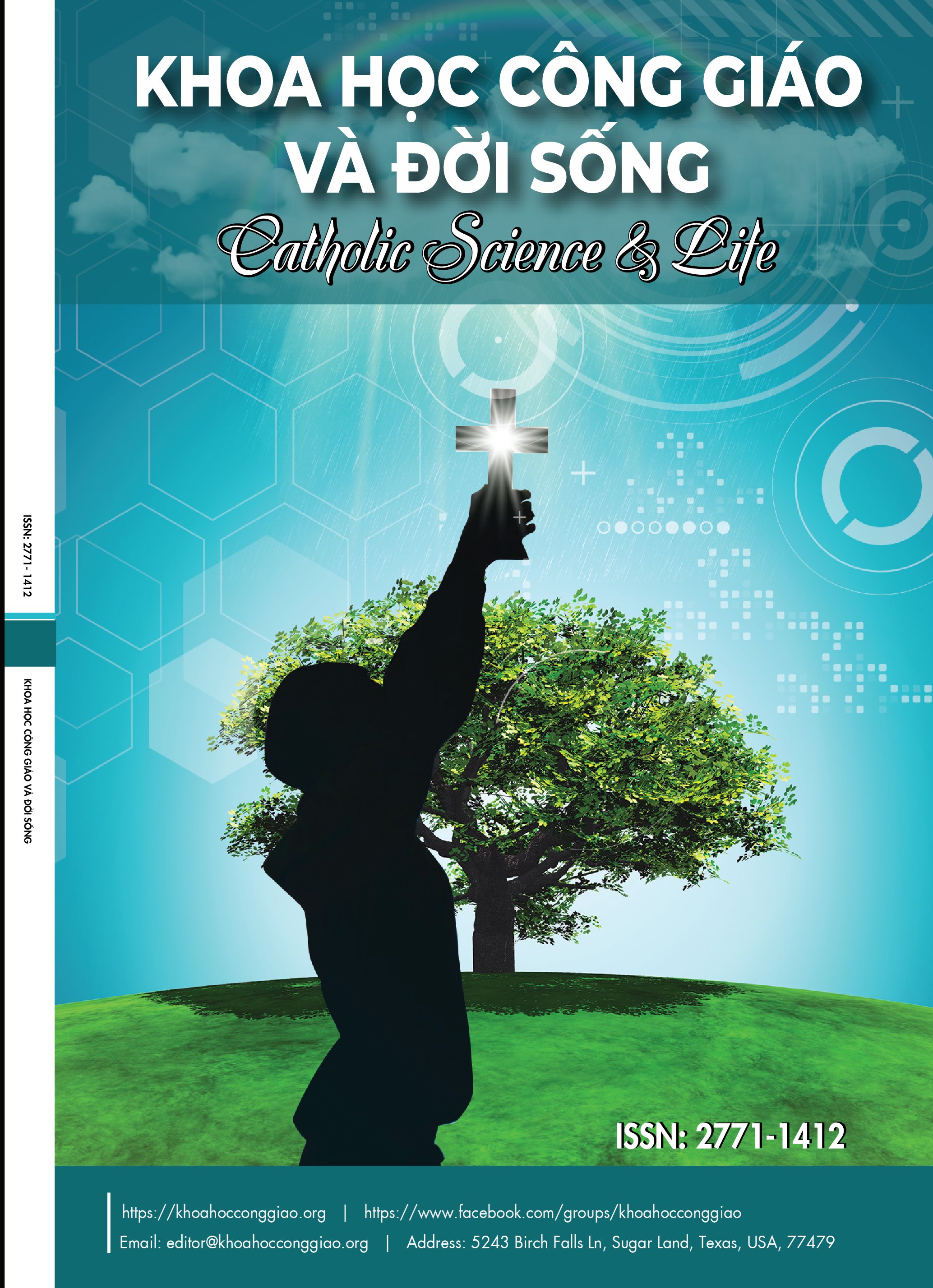Đêm Tối Thần Linh của Pseudo-Dionysius
The Dark Night of the Soul by Pseudo-Dionysius
DOI:
https://doi.org/10.54855/csl.233211Từ khóa:
Dionysius, Đêm tối thần linh, Thần học huyền nhiệmTóm tắt
Phải thừa nhận rằng việc truy tìm yếu tính của Thiên Chúa là một tham vọng thái quá đối với lý trí của con người, bởi lẽ Thiên Chúa vốn là Căn nguyên tối hậu của mọi thực tại và vốn tự thân là siêu vượt trên mọi thực tại. Tuy nhiên, cảm nếm hay nhận biết phần nào cái-là ấy sẽ là điều khả thi một khi con người được đưa-dẫn-vào hay được nâng-cao-lên tận cõi siêu vượt. Đây cũng chính là điều mà Dionysius diễn đạt trong tác phẩm Mystical Theology và các lá thư của ông. Bài viết này nhắm diễn giải điều trên thông qua chương thứ nhất của tác phẩm Mystical Theology, đặc biệt tập trung vào lời cầu nguyện của ông.
Abstract
It must be acknowledged that the pursuit of the essence of God is an excessively ambitious endeavor for human reason, as God is the ultimate source of all reality and transcends everything. However, to some extent, experiencing or perceiving that essence becomes feasible when humans are led into or elevated to the realm of transcendence. This is precisely what Dionysius expresses in his work "Mystical Theology" and his letters. This article aims to interpret this idea through the first chapter of "Mystical Theology," with a particular focus on his prayers.
Tài liệu tham khảo
Đậu Văn Hồng (2002). Triết học trung cổ. Lưu hành nội bộ.
Pseudo-Dionysius - The Complete Work, dịch bởi Colm Luibheid và Paul Rorem (1987). New York: Paulist Press.
Thomas Aquinas, Summa Theologiae, I-I, q.1, a.9, dịch bởi Gioakim Nguyễn Văn Liêm O.P và cộng tác viên (2015). Thư Viện Trung Tâm Học Vấn Đa Minh.
Tải xuống
Đã Xuất bản
Số
Chuyên mục
Giấy phép
Bản quyền (c) 2023 Maria Nguyễn Thị Thùy Linh, Đaminh Bà Rịa

Tác phẩm này được cấp phép theo Giấy phép quốc tế Creative Commons Attribution-NonCommercial 4.0 .
Authors retain copyright and grant the journal the right of first publication with the work simultaneously licensed under a Creative Commons Attribution 4.0 International License that allows others to share the work with an acknowledgment of the work's authorship and initial publication in this journal.
Authors are able to enter into separate, additional contractual arrangements for the non-exclusive distribution of the journal's published version of the work (e.g., post it to an institutional repository, in a journal or publish it in a book), with an acknowledgment of its initial publication in this journal.













